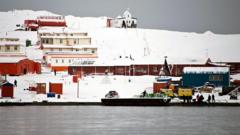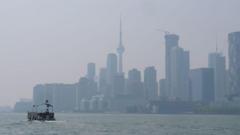Ushuaia, Argentina, known as the "end of the world," is seeing a significant increase in Antarctic tourism. While this boom is economically beneficial to its 83,000 residents, it also leads to rising living costs and a housing crisis.
Ushuaia's Tourism Boom: A Double-Edged Sword for Locals

Ushuaia's Tourism Boom: A Double-Edged Sword for Locals
Rising Antarctic tourism brings wealth to Ushuaia, but strains housing and resources for locals.
As summer envelops Ushuaia, Argentina, the so-called “end of the world” is bustling with tourists heading to Antarctica, much like the penguins that attract visitors to nearby Martillo Island. During a busy January afternoon, five large cruise ships filled with travelers, each shelling out an average of $15,000 to $18,000 for a unique 10-day expedition, flooded the local docks.
This surge in Antarctic cruises marks a stark contrast to a decade ago when only approximately 35,500 passengers embarked from Ushuaia. Last year's numbers soared to 111,500, with this year expected to see a 10 percent increase as the season draws to a close. Many of these visitors choose to stay in local accommodations for a night or two before or after their cruises, often opting for Airbnbs over the more modest hotel options available in the city.
While this influx of tourists benefits Ushuaia’s 83,000 inhabitants financially, it places incredible strain on local resources. The tourism boom raises the cost of living and exacerbates housing shortages, particularly for local workers. Locals like Julio Lovece, president of Ushuaia Foundation XXI, acknowledge the unique selling point of their region: “We sell an aura… we sell the end of the world.” But as the balance of prosperity and strain hangs in the air, many wonder how long the “end of the world” can remain sustainably wild amidst the booming tourist market.


















